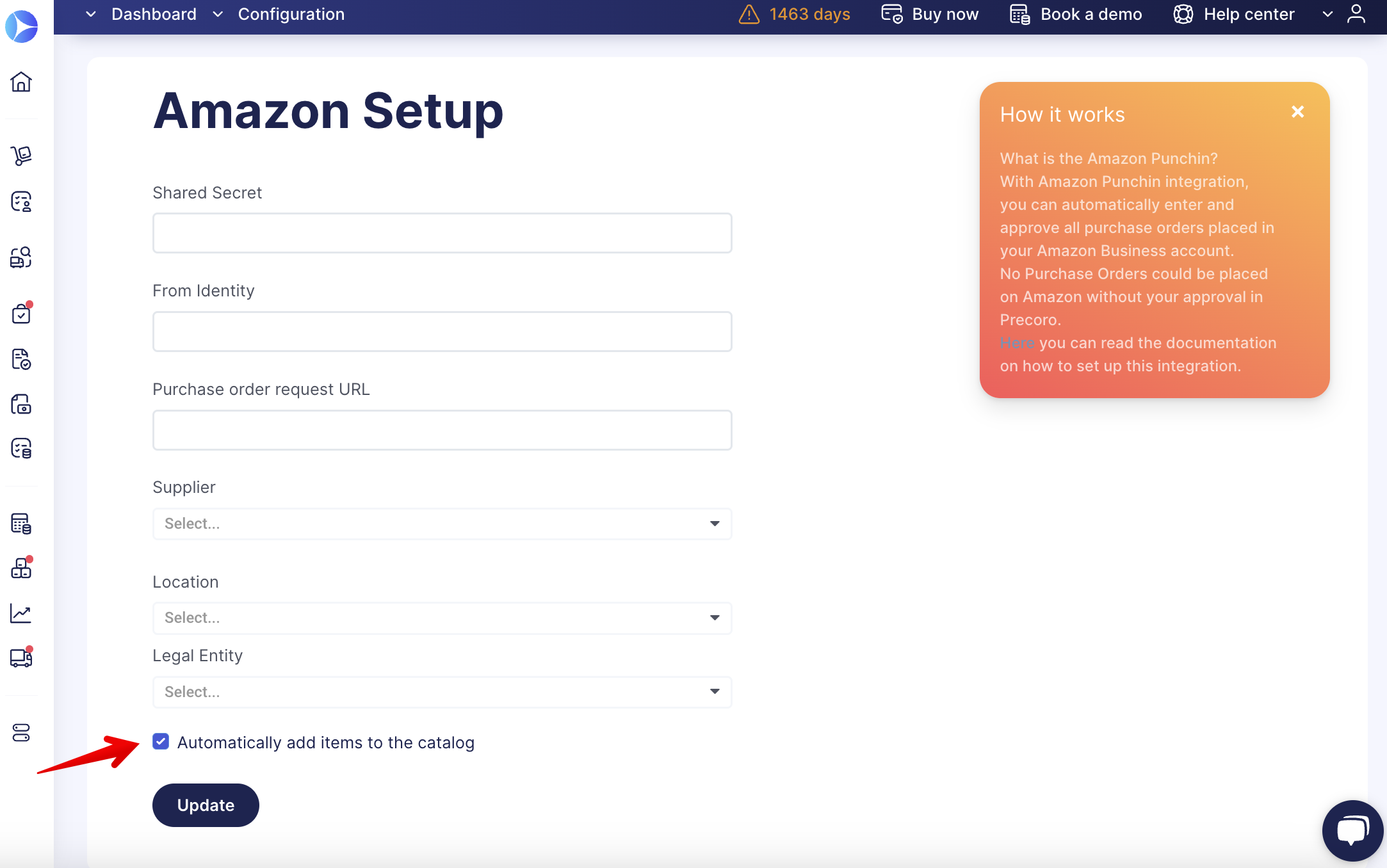Amazon Catalog Item Mapping
Learn how to automatically fill in item fields when using Amazon Punch-In and add new items to the catalog.
TABLE OF CONTENTS
After setting up the Punch-In you can now automate the processes of filling in the items fields when creating documents and automatically add new items to the Precoro Catalog as well. Let’s take a closer look at how this works.
How to Map Existing Items with Precoro Catalog
When you create a new Purchase Requisition or Purchase Order from Amazon, Precoro will check the items you have added and map them with the ones already existing in the Precoro Catalog. That way, you will not need to manually enter Items Custom Fields.
Therefore, if you have CFIs in the Catalog and they match the ones activated in the documents (i.e., both Items and PR or PO are checked in the CFI settings), then those values will be automatically entered when creating a document from Amazon.
Learn more about working with CFIs in Precoro here.
Also, if the Items Custom Fields values are not assigned in the Catalog, Precoro will search and input the default values you have set for the Supplier.
Please consult this article for more information on How to Set Default Values for Suppliers.
The mapping process includes the following values:
| Values For Mapping | Conditions That Must Be Met |
| Name + SKU + Supplier + Currency | Used when a Supplier is assigned for the item and you have enabled the SKU. |
| Name + SKU | Used when the item has no assigned Supplier and you have enabled the SKU. |
| Name | Used when the item has no assigned Supplier and you have disabled the SKU. |
| — | If the item is not in the Catalog, it will be added as an empty row, and you will need to assign all the CFIs manually. |
More on setting the SKU you can find here.
How to Automatically Add New Items to the Catalog
You can automate your workflow even further by enabling the Automatically Add Items to the Catalog parameter on your Amazon configuration page.

With the Automatically Add Items to the Catalog parameter activated, all new items will be added to your Catalog.
New items will not be automatically added to the Catalog if the parameter is deactivated.